
The final section of Chapter VII of Immanuel Velikovsky’s Earth in Upheaval is devoted entirely to the discoveries made by the Swedish physicist and oceanographer Hans Pettersson during the Albatross Expedition, a fifteen-month long voyage in 1947-48 that took him around the globe in a 70-metre four-masted motor-schooner.
We met Hans Pettersson in an earlier section, In Northern China, where Velikovsky cited him in support of his hypothesis that loess was of cosmic origin. Pettersson began lecturing in oceanography at the University of Gothenburg in 1914, later becoming Sweden’s first Professor of Oceanography. In 1938 he founded the university’s Institute of Oceanography.
In this section Velikovsky cites three of Hans Pettersson’s publications:
The Geochronology of the Deep Ocean Bed, Tellus (1949)
Exploring the Ocean Floor, Scientific American (August 1950)
Westward Ho with the Albatross (1953)
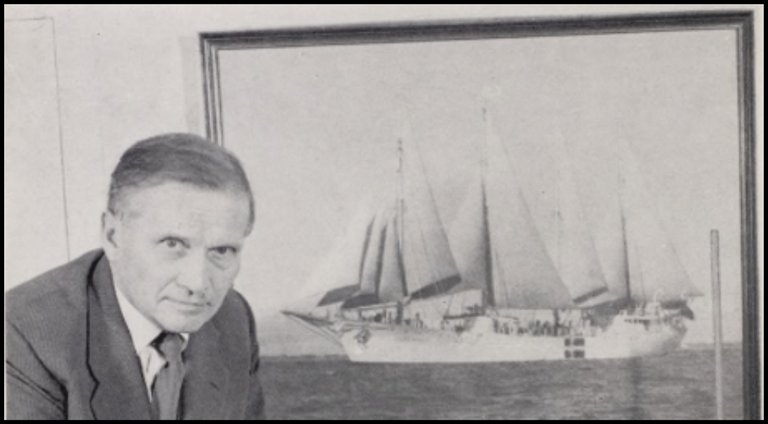
In 1949, shortly after his return to Gothenburg, Pettersson wrote an article on deep-sea cores for the Swedish Geophysical Society. The Geochronology of the Deep Ocean Bed was given the place honour in the very first issue of Tellus, the Society’s new quarterly journal. Velikovsky misnames this article Chronology of the Deep Ocean Bed. The following year Scientific American published a brief article on the Albatross Expedition, written by Pettersson for popular consumption. Westward Ho with the Albatross, which came out in 1953, is Pettersson’s memoir of the voyage.
The principal aim of the expedition was to compile a set of cores of deep-sea sediments from the bottoms of the Atlantic, Pacific and Indian Oceans, as well as of the Mediterranean Sea, using the newly developed piston sampler:
Until recently the records of the deep were effectively sealed. The ordinary core sampler, a steel tube that is pressed into the ocean bottom to bring up a thin cross section of it, rarely sampled layers deeper than three feet [1 m], and the samples were often deformed by the walls of the tube. But during World War II, Swedish oceanographers, who were unable to go to sea, devoted their efforts to improving the tools required for the study of the deep ocean. In 1942 B. Kullenberg and I constructed at the Oceanographic Institute in Göteborg [Gothenburg] a vacuum core sampler that obtained from the bottom of the deep Gullmar Fjord an undeformed sediment core 45 feet [14 m] long. Three years later Kullenberg used his piston core sampler to secure a core 65 feet [20 m] long. In the case of both of these instruments it is the tremendous pressure of the water at great depths that forces the sediment column up into the coring tube. (Pettersson 1950:42-43)

When the Albatross returned to Gothenburg in October 1948, it brought with it a wealth of new data and material:
We brought back in the cold-storage room of the Albatross some 200 deep-ocean sediment cores obtained with the piston core sampler. Their total length was more than a mile [1.6 km]. We had also the records of 400 depth charges indicating the thickness of the sediment carpet, several thousand water samples (some of large volume for the measurement of the uranium and radium content of sea water) and tens of thousands of temperature measurements down to great depths. Our echograms, drawn by an ultrasonic depth recorder, had delineated with unprecedented detail the profile of the bottom for 17,000 miles [27,000 km] of our course. We had made measurements of the optical properties of sea water, revealing the concentration of clouds of particles at certain depths; and we had recorded the various spectral regions, including the ultraviolet, of submarine daylight down to more than 600 feet [183 m].
It is not surprising that Velikovsky chose to call upon Pettersson to support his catastrophist cause. In the second paragraph of his article in the Scientific American Pettersson pulls no punches:
For millions of years minute particles have settled like snow on the original rocky bottom of the oceans. The particles have covered the bottom with a carpet of sediments, ranging in hue from the deep chocolate of the “red” clay to the light color of the calcareous ooze which bears the countless shells of small organisms that have drifted down from the sunlit surface waters. In this carpet, the thickness of which increases with incredible slowness, is the evidence of great catastrophes that have altered the face of the earth. Climatic catastrophes, which piled thousands of feet of ice on the higher latitudes of the continents, also covered the oceans with icebergs and ice fields at lower latitudes and chilled the surface waters even down to the Equator. Volcanic catastrophes cast rains of ash over the sea, inserting the bookmarks of Vulcan, god of the nether fires, into the sedimentary records of his colleague Neptune. Tectonic catastrophes raised or lowered the ocean bottom hundreds and even thousands of feet, spreading huge “tidal” waves which destroyed plant and animal life on the coastal plains. The records of the deep. which unlike the eroded continental records of the rocks contain no missing volumes nor torn pages, can give us new and startling insights into such happenings of the past. (Pettersson 1949:42)
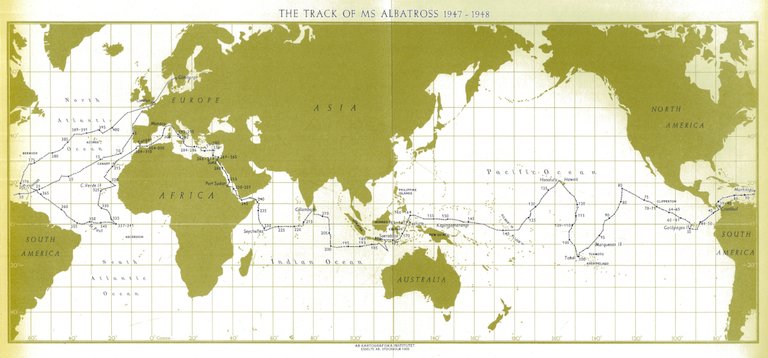
In addition to the abundant evidence of volcanism, the core samples also bore witness to the cosmic origin of many of these catastrophes:
There has been a great deal of interest in the surprisingly high content of nickel found in our central Pacific red-clay cores by H. Rotschi of France. Nickel is very scarce in sea water; there is only about one part of nickel in 10 billion parts of water. In a central Pacific red-clay core the proportion is 300 to 700 parts of nickel to a million, a concentration very much greater. The concentration is about eight times the average nickel content of the Atlantic red clay, a ratio which inversely approaches its sedimentation rate with respect to similar material in the Pacific. Perhaps even more interesting are the five distinct maxima of nickel content at different levels in a single central Pacific core, where the concentration jumps two and almost three times its average value.
It has been suggested that the high nickel content of these slowly deposited sediments is derived from volcanic lava, or basalt, emitted over the deep ocean floor. Recently, however, S. Landergren of the Geological Survey in Stockholm made a spectrographic analysis of basalt and found it to contain only modest amounts of nickel. It is tempting to assume quite a different origin for the abyssal nickel: meteoric dust. This extraterrestrial material settles from the billions of meteors that enter the earth’s atmosphere daily and usually burn to dust high in the stratosphere. It is known to have a very high nickel content averaging about two per cent. The maxima of nickel content found at certain levels of our cores might then be due to very heavy showers of meteors in the remote past. The principal difficulty of this explanation is that it requires a rate of accretion of meteoric dust several hundred times greater than that which astronomers, who base their estimates on visual and telescopic counts of meteors, are presently prepared to admit. (Pettersson 1949:44)
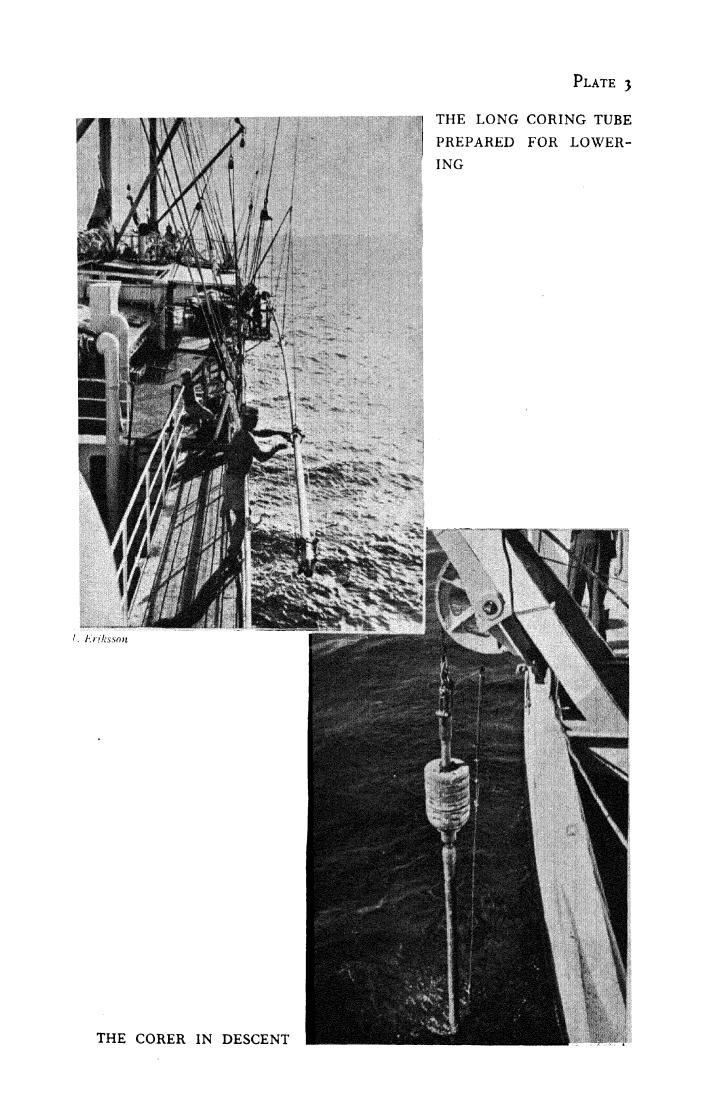
As Velikovsky notes, Pettersson returned to this meteoritic hypothesis in Westward Ho with the Albatross. Chapter 16 of that book bears the title Bullets from the Cosmos. Pettersson’s revised estimate of the rate of accretion of meteoric dust to account for the nickel content of oceanic sediments is even greater than his earlier estimate:
Fortunately there are nowadays very accurate methods for measuring minute traces of nickel, sensitive to a few millionths of a gram. By means of such methods, the nickel content has been measured in the long red-clay core mentioned above. The results of these measurements proved the deposit to contain from 0.03 to 0.07 per cent nickel by weight, which is from five to ten times more than in other oceanic sediments of a more rapid rate of accumulation. On the other hand, the rate of growth of the sediment in this particular core has been estimated from radioactive age-determinations to be about half a millimeter or approximately 0.02 inch in one thousand years. Assuming the average nickel content of meteoric dust to be two per cent, an approximate value for the rate of accretion of cosmic dust to the whole Earth can be worked out from these data. The result is very high—about 10,000 tons per day, or over a thousand times higher than the value computed from counting the shooting stars and estimating their mass. (Pettersson 1953:150)
The value of 10,000 tons per day is an upper limit. Nevertheless, it is such a shock to Pettersson that he doubted the accuracy of his measurements:
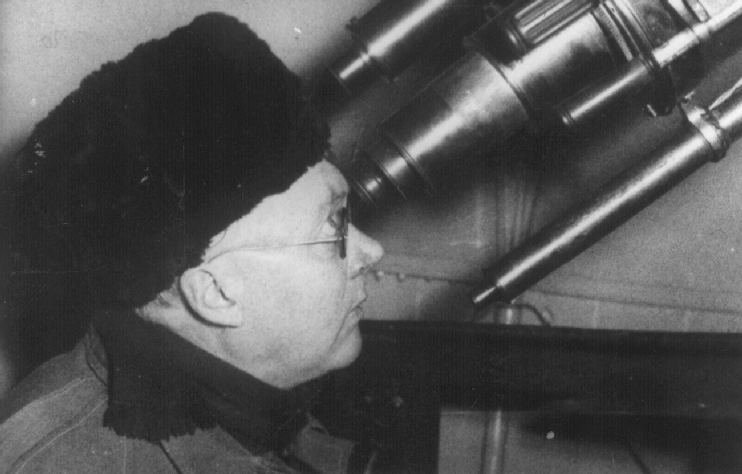
This startling discrepancy between the results found by astronomers counting meteors and our own study of the deep-ocean sediments seemed to throw doubts on the accuracy of our methods. A possible explanation for this apparent contradiction has been furnished by the brilliant work of Dr. Öpik, of the Armagh Observatory, and of Dr. Fred L. Whipple of Harvard. Papers by these scientists show that cosmic dust particles of very small size can pass undamaged through the whole of our atmosphere. Thanks to their relatively large surface, in comparison with their small mass, the frictional heat produced through their encounter with air molecules is dissipated as radiation before the melting-point of the material is reached. Consequently, they are not visible as shooting stars and thus escape direct observation. Dr. Whipple believes that this invisible rain of cosmic dust particles, because of their enormous number, may well give a total weight thousands of times greater than that which the meteor counts have given. In a letter to the author he adds that measurements of nickel and other elements present in the deep-sea deposits appear to be the only way of estimating the total accretion of cosmic matter to our planet. Dr. Öpik has recently sent me a paper on this subject in which he further elaborates his theory of cosmic dust in interplanetary space. According to Öpik, the accretion of cosmic dust on the surface of the Earth may well have values as high as those we have inferred from our analyses of the nickel in deep-sea deposits. He also discusses the possible causes for the large variations in nickel content we have found at different levels in our cores (Pettersson 1953:150-151)

Velikovsky, of course, does not quote this passage from Westward Ho with the Albatross. Instead, he concludes his discussion of the findings of the Albatross Expedition with the following peroration:
In other words at some time or times there was such a fall of meteoric dust that, apportioned throughout the entire age of the ocean, it would increase a thousandfold the daily accumulation of meteoric dust since the birth of the ocean.
The ash and lava on the bottom of the oceans indicate catastrophic occurrences in the past. Iron and nickel point to celestial showers of meteorites, and thus possibly also to the cause of the tectonic ruptures, of the collapse of the ocean floor and of the outbursts of lava under the surface of great oceanic spaces. (Velikovsky 97)
Whether or not the current rate of meteoric accretion is sufficient to account for the nickel content of oceanic sediments, one thing cannot be denied: the abundance of nickel is not constant with depth. As we have seen, Pettersson observed five distinct maxima of nickel content at different levels in a single central Pacific core. These maxima are layers of sediment in which the concentration of nickel was found to be two and almost three times the long-term average (Pettersson 1949:44). This, at least, undermines the gradualist principle of Uniformitarianism.
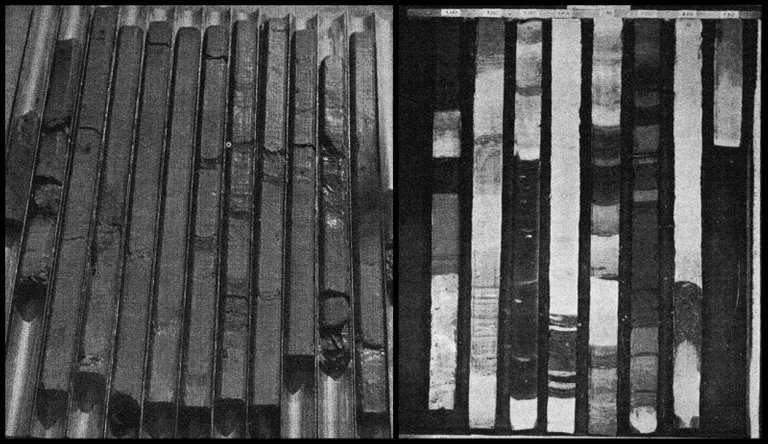
Taking Leave of Chapter VII
Velikovsky concludes this section with a summary of the evidence for catastrophism presented in the first seven chapters of Earth in Upheaval:
Evidence of great upheavals has been brought forth from the islands of the Arctic Ocean and the tundras of Siberia; from the soil of Alaska; from Spitsbergen and Greenland; from the caves of England, the forest-bed of Norfolk, and the rock fissures of Wales and Cornwall; from the rocks of France, the Alps and Juras, and from Gibraltar and Sicily; from the Sahara and the Rift of Africa; from Arabia and its harras, the Kashmir slopes of the Himalayas, and the Siwalik Hills; from the Irrawaddy in Burma and from the Tientsin and Choukoutien deposits in China; from the Andes and the Altiplano; from the asphalt pits of California; from the Rocky Mountains and the Columbia Plateau; from the Cumberland cave in Maryland and Agate Spring Quarry in Nebraska; from the hills of Michigan and Vermont with skeletons of whales on them; from the Carolina coast; from the submerged coasts and the bottom of the Atlantic with its Ridge, and the lava bottom of the Pacific.
With many other places in various parts of the world we shall deal in some detail in the pages that follow; but we shall not exhaust the list, for there is not a meridian of longitude or a degree of latitude that does not show scars of repeated upheavals. (Velikovsky 97-98)
In the next two chapters Velikovsky will construct a working hypothesis to account for much of this evidence, and in the remaining chapters of Earth in Upheaval he will attempt to show that this working hypothesis is consistent not only with the evidence that has already been presented but also with much more that has still to be investigated.

And that’s a good place to stop.
References
- Hans Pettersson, The Geochronology of the Deep Ocean Bed, Tellus A: Dynamic Meteorology and Oceanography, Volume 1, Issue 1, Pages 1-5, Stockholm (1949)
- Hans Pettersson, Exploring the Ocean Floor, Scientific American, Volume 183, Issue 2, Pages 42-45, Nature America Inc, New York (1950)
- Hans Pettersson, Westward Ho with the Albatross, E P Dutton & Co, Inc, New York (1953)
- Immanuel Velikovsky, Earth in Upheaval, Pocket Books, Simon & Schuster, New York (1955, 1977)
Image Credits
- Albatross: Hans Pettersson, Westward Ho with the Albatross, Frontispiece, University of Gothenburg Archive, Public Domain
- Hans Pettersson: University of Gothenburg, Public Domain
- Piston Core Sampler: © Columbia Climate School, Phebe Pierson (photographer), Fair Use
- Voyage of the Albatross (1947-1948): © AB Kartografiska Institutet (cartographers), Stockholm (1955), Fair Use
- The Piston Corer Being Deployed from Albatross: Hans Pettersson, Westward Ho with the Albatross, Plate 3, John Eriksson (photographer), Public Domain
- Ernst Öpik: Ernst Öpik and the 10-Inch Grubb Telescope at the Armagh Observatory, Anonymous Photo, Public Domain
- Fred Lawrence Whipple: © Sonoma State University, Fair Use
- Two Sediment Cores from the Albatross Expedition: Hans Pettersson, Westward Ho with the Albatross, Plates 22 & 23, Hans Pettersson (photographer), Public Domain
- Earth in Upheaval: First Edition, © Doubleday & Company, Garden City, New York (1955), Fair Use
- Immanuel Velikovsky: Anonymous Photograph (1950), GRANGER, Historical Picture Archive, Fair Use

Thanks for your contribution to the STEMsocial community. Feel free to join us on discord to get to know the rest of us!
Please consider delegating to the @stemsocial account (85% of the curation rewards are returned).
You may also include @stemsocial as a beneficiary of the rewards of this post to get a stronger support.